Easy Steps to Create a Remote Learning Environment: A Comprehensive Guide

Ashley Merit
Content writer and editor for Netus.AI
Table of Contents
Easy Steps to Create a Remote Learning Environment. Remote learning has gained popularity in recent times, particularly benefiting working professionals, students taking professional courses, and part-time workers. Although it cannot completely replace the traditional face-to-face teaching experience, remote learning offers numerous advantages, making it a valuable method of education.
In the current scenario, driven by the COVID-19 pandemic, online education has become a necessity rather than just an alternative for many people worldwide. Despite its drawbacks, remote learning has been successful in providing continuity and flexibility, allowing learners to stay connected and engaged with educational resources.
Key Takeaways
- Remote learning benefits various groups like working professionals and part-time students.
- It can’t wholly replace face-to-face teaching but offers unique advantages.
- Online education has become crucial in the present-day context due to the pandemic.
Some of the Perks of Remote Learning
Remote learning provides students with the luxury of learning from their homes, allowing them to progress at their own pace as the courses can often be customized. This method also offers more flexibility in scheduling, making professional courses more accommodating for individual time preferences.
In a remote learning environment, assessments and evaluations are expedited due to technology-driven processes, enabling students to receive prompt feedback and easily rectify errors. Furthermore, as the system’s answers are pre-encoded, they tend to be accurate and free from errors, ensuring higher quality learning outcomes.
Online Education a Necessity in the Present-Day Scenario
The ongoing pandemic has caused a significant shift in the education system, moving from traditional classrooms to remote learning environments. This transition has been anything but smooth, presenting various challenges for students and teachers alike.
It is essential to acknowledge that remote learning cannot fully replicate a physical classroom experience. Instead, the focus lies on creating effective learning methods that suit this new environment. A well-structured plan is necessary to deliver lessons seamlessly in an online setting.
Technology plays a pivotal role in remote learning. Students and teachers must ensure they have access to user-friendly devices and stable internet connections to participate in this new educational landscape.
Creating a distraction-free atmosphere is crucial for productive remote learning. Both teachers and students should select a quiet space with minimal interruptions. Effective lighting and minimal background noise will aid in maintaining focus.
As teaching methods evolve, traditional teaching techniques are being replaced by technology-driven approaches. Teachers must adapt their lesson planning strategies and learn how to deliver engaging online classes that resonate with students. Professional development training can help teachers become skilled in dealing with the challenges unique to remote learning situations.
Online safety is a concern for younger students who may inadvertently access inappropriate content. Adult supervision and guidance can minimize the risks associated with internet usage while providing students with necessary independence.
Prolonged screen time poses risks to students’ health, particularly their eyesight. To combat this, they should have access to a comfortable study space with proper furniture that facilitates good posture.
Remote learning should be taken as seriously as traditional classroom settings. Students should display appropriate behavior and follow netiquettes in online interactions. This cooperation from students will enable teachers to deliver lessons smoothly and effectively.
One significant challenge emerging from the digital shift in education is the rise in plagiarism. Students participating in remote learning may be more likely to engage in unfair practices, such as cheating in assessments. Addressing plagiarism requires vigilance from educators, as well as fostering a sense of academic integrity among students.
In summary, the shift to online education in response to the pandemic necessitates adaptations in learning methods, teaching styles, and even the learning environment. By embracing these changes and implementing strategies for success, remote learning can become an effective and necessary alternative to the traditional classroom experience.
What Is Plagiarism?
Plagiarism involves presenting someone else’s original work as your own without providing proper acknowledgement. This unethical behavior undermines academic integrity. To combat plagiarism, professional development should focus on teaching the importance of citing sources and using tools to detect plagiarism.
How Does the Tool Work?
Plagiarism detection tools operate by comparing the submitted content to a database of source material. By highlighting similarities, these tools efficiently identify potential instances of plagiarism. They have become a staple in educational institutions, which often use this software to enforce academic integrity policies.
Students are encouraged to properly acknowledge the work of others by using appropriate citations and references. With guidance from parents and educators, plagiarism can be minimized in remote learning environments.
As education has rapidly adapted to remote learning, various platforms and technologies have been employed to facilitate effective communication. Some popular tools include:
- Microsoft Teams: A collaboration platform providing chat, video meetings, and file storage.
- Zoom: A video conferencing tool for virtual meetings with features such as screen sharing and breakout rooms.
- Google Classroom: A learning management system allowing teachers to create, distribute, and grade assignments.
- Kahoot: An online quiz platform for creating and administering engaging quizzes.
- Flipgrid: A video-sharing platform where students and teachers can share and respond to short video clips.
Addressing the challenges faced by students from diverse socio-economic backgrounds, solutions such as providing laptops or ensuring internet connectivity have been implemented to accommodate the shift to online learning. Through these efforts, remote education has become increasingly accessible to a broader range of students.
Frequently Asked Questions
What do effective online learning environments include?
Effective online learning environments should have the following key components:
- Accessible platform: Choose an easy-to-use platform that is accessible to students and parents.
- Clear structure: Organize the learning content into modules or units, making it easy for students to follow.
- Regular engagement: Foster interaction through discussion boards, online polls or quizzes, and video conferences.
- Timely feedback: Provide students with timely feedback on their progress and achievements.
- Support mechanism: Offer guidance, resources, and information to help students navigate the online learning process.
How can parents create a suitable learning space for their children?
Parents can follow these tips to create a conducive learning space at home:
- Designate a separate area: Choose a quiet area with minimal distractions and provide a comfortable workspace.
- Organize materials: Keep all necessary resources and supplies organized and readily available.
- Ensure connectivity: Set up a reliable internet connection and provide access to necessary technological tools.
- Establish routines: Create a fixed schedule to help children develop healthy habits and routines.
What are the steps to establish a fully functional remote classroom?
Follow these steps to set up a remote classroom:
- Choose a suitable platform for online learning.
- Organize course content in a clear, structured manner.
- Establish communication channels for students and parents.
- Equip the virtual classroom with essential technological tools.
- Adapt lesson plans and assignments to suit remote learning.
- Ensure internet connectivity and device accessibility for all students.
What advice can be given to teachers who are new to remote learning?
For teachers implementing a virtual classroom for the first time, consider these best practices:
- Start with simple, familiar tools and gradually introduce new features.
- Provide opportunities for real-time engagement and collaboration.
- Communicate clear expectations and provide guidelines on online etiquette.
- Be mindful of the diverse needs of students, and offer flexibility and adaptability in learning activities.
- Encourage connection and interaction among students.
Which tools and resources are essential for seamless remote learning?
The following tools and resources can improve the remote learning experience:
- Learning Management System (LMS) for organizing and delivering course content.
- Video conferencing tools for live interaction and collaboration.
- Asynchronous communication channels, such as email or discussion boards.
- Digital resources, including readings, videos, and interactive simulations.
- Assessment tools for evaluating student performance and providing timely feedback.
How can educators maintain student engagement during remote learning?
To maintain student engagement in a remote learning setting, consider these approaches:
- Encourage active participation by incorporating interactive elements, such as online polls, quizzes, or collaborative tasks.
- Establish virtual office hours or Q&A sessions for students to ask questions and seek help.
- Use multimedia resources to diversify learning content and appeal to different learning styles.
- Allow opportunities for peer interaction and group projects.
- Provide consistent feedback and recognition for students’ achievements and progress.
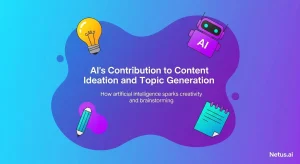
The Role of AI in Content Ideation and Topic Generation | NetusAI
AI’s contribution to content ideation and topic generation AI plays a crucial role in content creation and topic generation. Its effective application significantly reduces preparation
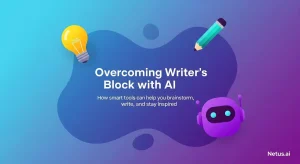
Leveraging AI to conquer writer's block | NetusAI
Overcoming writer’s block with AI Writer’s block affects all writers, new or experienced. Even for the most accomplished writers, this common and frustrating problem presents
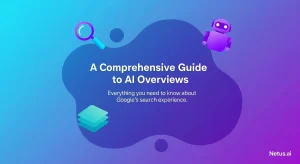
AI Overviews: A Comprehensive Guide | NetusAI
A Comprehensive Guide to AI Overviews Google has integrated AI Overviews into its search results as a knowledge panel. This feature acts like an AI
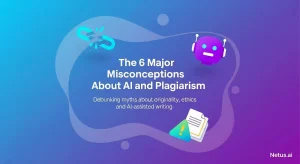
6 Common Misconceptions Regarding AI and Plagiarism | NetusAI
The 6 major misconceptions about AI and plagiarism Regarding AI and plagiarism, numerous myths, misconceptions and assumptions are circulating. Let’s distinguish between fact and fiction.
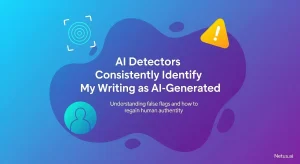
My writing is repeatedly flagged as AI generated by detection software | NetusAI
AI detectors consistently identify my writing as AI generated Even original, human-written content can face challenges from AI content detection false positives, impacting copywriters and
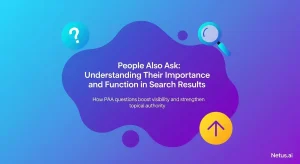
People Also Ask: Understanding their importance and function in search results
People Also Ask: Understanding their importance and function in search results A People Also Ask (PAA) search result is a zero-click Google response. It presents
